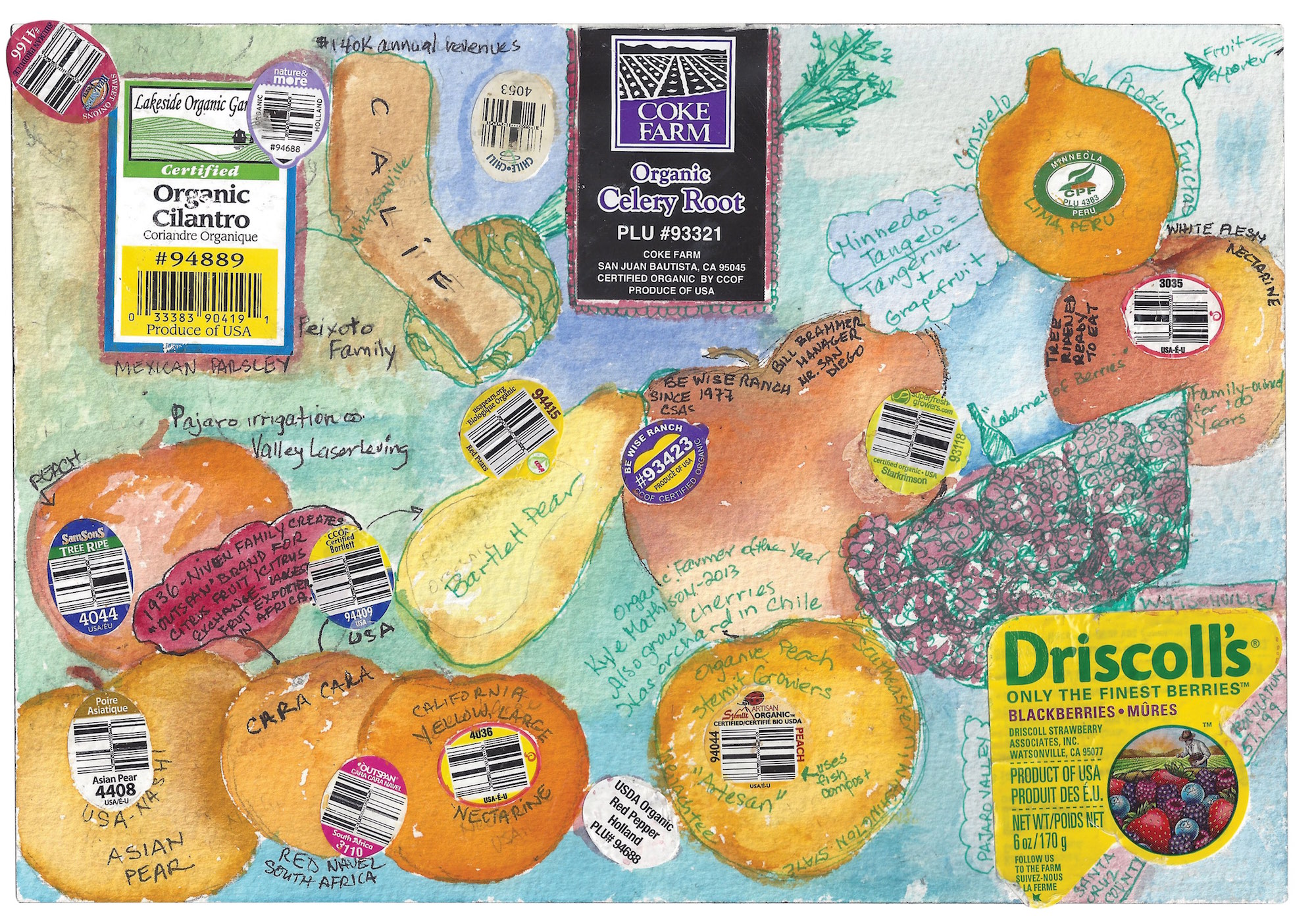Your fruit and vegetables come with a surprising amount of information about their history and origins. Each sticker has a code printed on it along with the grower’s name and logo.
These codes are called PLUs, or Price Lookup Numbers (why isn’t the acronym PLN, then?) so the store can find out the unit cost for each item. If a number consists of four digits, the item is conventionally grown; if the number consists of five digits and begins with an 8, the item is genetically modified. And if the five digits begin with a 9, you’re buying organic produce.
Some producers are going the extra step and adding QR codes that take you to a producer’s website where you can find all kinds of information, including the names of the producer’s pet sheep. In the future, be prepared for even more transparency — labels may disappear as scanners and digital “ink” become cost effective. Perhaps the store shelf will notice which fruit you put in your basket and send accompanying data to your cell phone. These paper stickers will be the old papyrus scroll for food storytelling.
(Did you know you can eat the labels? All the materials in the paper, ink and glue are food grade. C’mon, we dare you….)

Author
Food+City publisher Robyn Metcalfe has been an editor and writer at Sunset Magazine, a heritage pig farmer and a food historian. You can find her @foodmiracle on Twitter because she thinks food is a miracle.